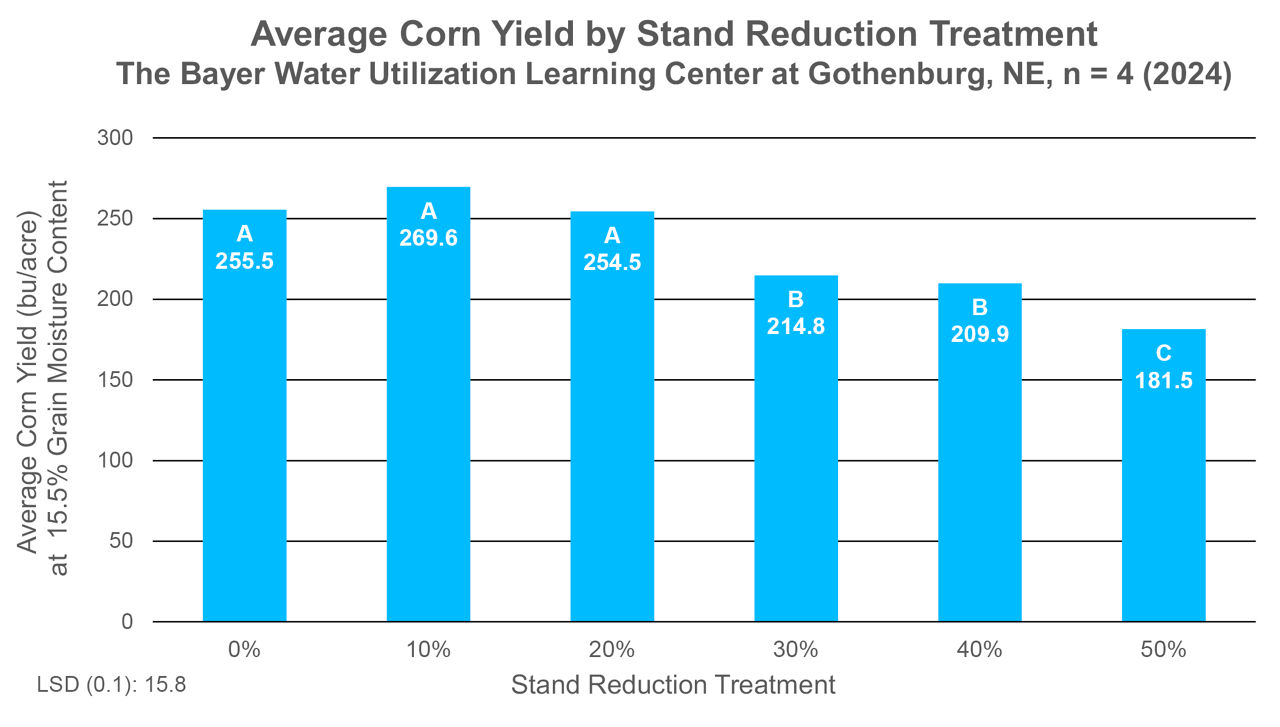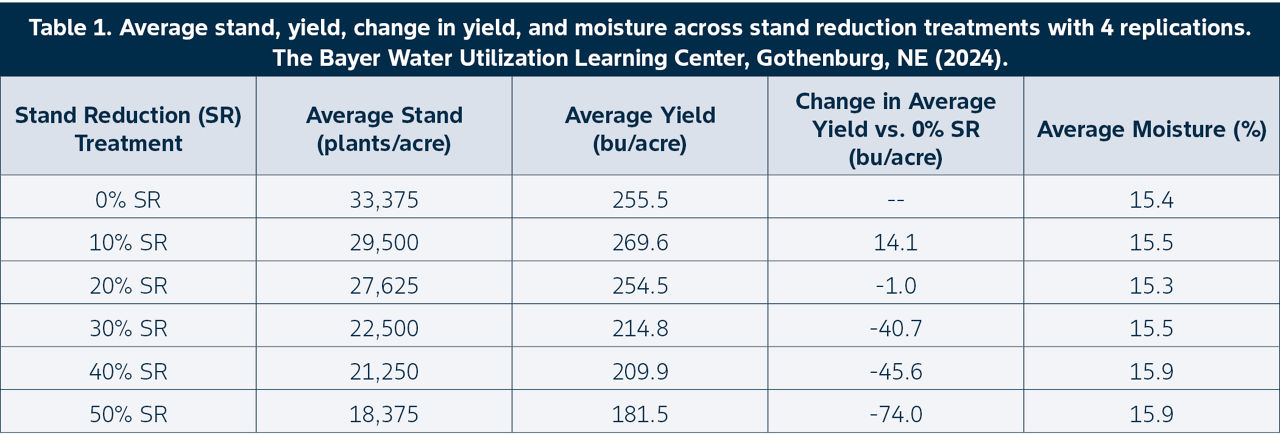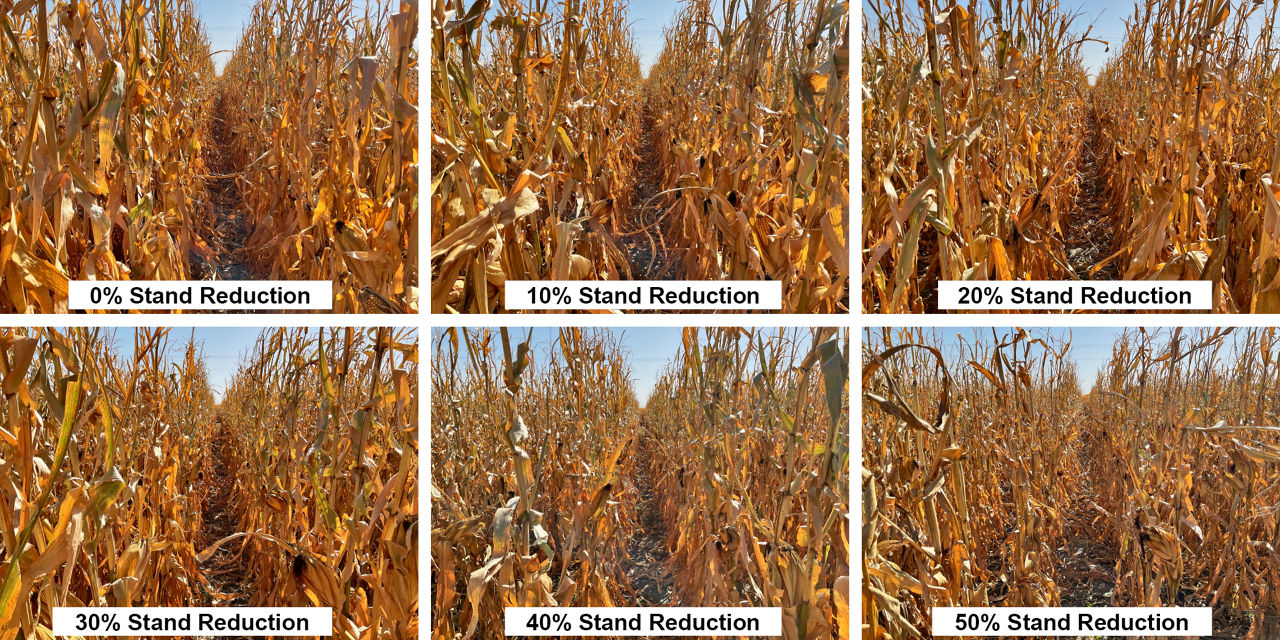Losses From Corn Stand Reduction
February 25, 2025
TRIAL OBJECTIVE
- Early season stressors such as below-average temperatures can greatly impact emergence and reduce overall stands.
- Severe reductions in stand can significantly impact yields and reduce profitability per acre.
- This study’s objective was to determine the effect of 6 levels of stand reduction on corn yield potential.
RESEARCH SITE DETAILS

- The trial was arranged as a randomized complete block design with four replications and one treatment factor – percent stand reduction.
- Stand Reduction: 0, 10, 20, 30, 40, and 50% were achieved by mixing a non-herbicide tolerant corn product with the test product so that when the corn plants were sprayed, the desired percent of the stand was removed.
- Corn Products: 108 relative maturity (RM), SmartStax® PRO Technology corn product.
- All treatments were planted in 30-inch rows at 34,000 seeds per acre.
- Corn was fully irrigated throughout the growing season for a total of 6 inches of applied irrigation.
- The trial was strip-tilled on 04/10/2024 and a base fertilizer application of 30 lb of nitrogen (N) per acre, 60 lb of phosphorus (P) per acre, and 25 lb of sulfur (S) acre was made. Later, the trial was sidedressed with 150 lb N/acre.
- Weeds were managed with a herbicide application.
- No fungicides or insecticides were applied over the course of the growing season.
- Corn harvest population counts were taken prior to harvest.
- Total weight, test weight, and moisture content were collected with a plot combine to calculate yield per acre.
UNDERSTANDING THE RESULTS
- While not significantly different, the maximum yield was 14.1 bu/acre higher in the 10% stand reduction treatment than in the 0% reduction treatment. The 108 RM product tested is rated as a semi-flex ear, so it may have the ability to respond positively to reduced populations.
- Yields were maintained up to a 20% reduction in stand, but statistically significant yield loss occurred in the 30% stand reduction treatment. The 30% stand reduction treatment had a yield reduction of just over 40 bu/acre compared to the 0% stand reduction treatment.
- Another statistically significant loss in yield occurred in the 50% stand reduction treatment, which yielded 74 bu/acre less than the 0% stand reduction treatment.

Table 1. Average stand, yield, change in yield, and moisture across stand reduction treatments with 4 replications. The Bayer Water Utilization Learning Center, Gothenburg, NE (2024).


KEY LEARNINGS
- Corn products can respond very differently to stand reduction. As populations drop, the semi-flex ear corn product used in this trial handled stand loss relatively well, suffering no significant yield loss up to a 20% stand reduction from what was planted.
- Major losses in final stand early in the growing season, such as 30% stand reductions or more, can potentially cause dramatic reductions in yield (−40 bu/acre). Stand reductions may also open up the canopy which can greatly impact weed control.
- Be sure to work with local seed sales team representatives to select products with the optimal fits for the fields in your operation.
1214_507450